Lab Grown vs. Natural Diamonds: Everything You Need to Know
A detailed comparison of lab grown and natural diamonds
- Lab grown diamonds are real diamonds, created in controlled lab conditions.
- They have the same physical, chemical, and optical properties as natural diamonds, and are graded using the same 4 Cs: cut, color, clarity, and carat.
- Lab diamonds offer exceptional value compared to mined diamonds, making them a smart, budget-friendly choice.
- Rare Carat ensures full transparency and expert guidance, helping you find the perfect high-quality lab diamond with confidence.
What is a lab grown diamond?
A diamond is called lab grown when it comes from a controlled chemical process.
Lab grown diamonds are physically, chemically, and optically identical to natural diamonds. A jeweler cannot tell them apart with the naked eye.
Both are made of the same thing: carbon atoms arranged in a special crystal structure. That structure is what gives diamonds their incredible strength, sparkle, and fire.
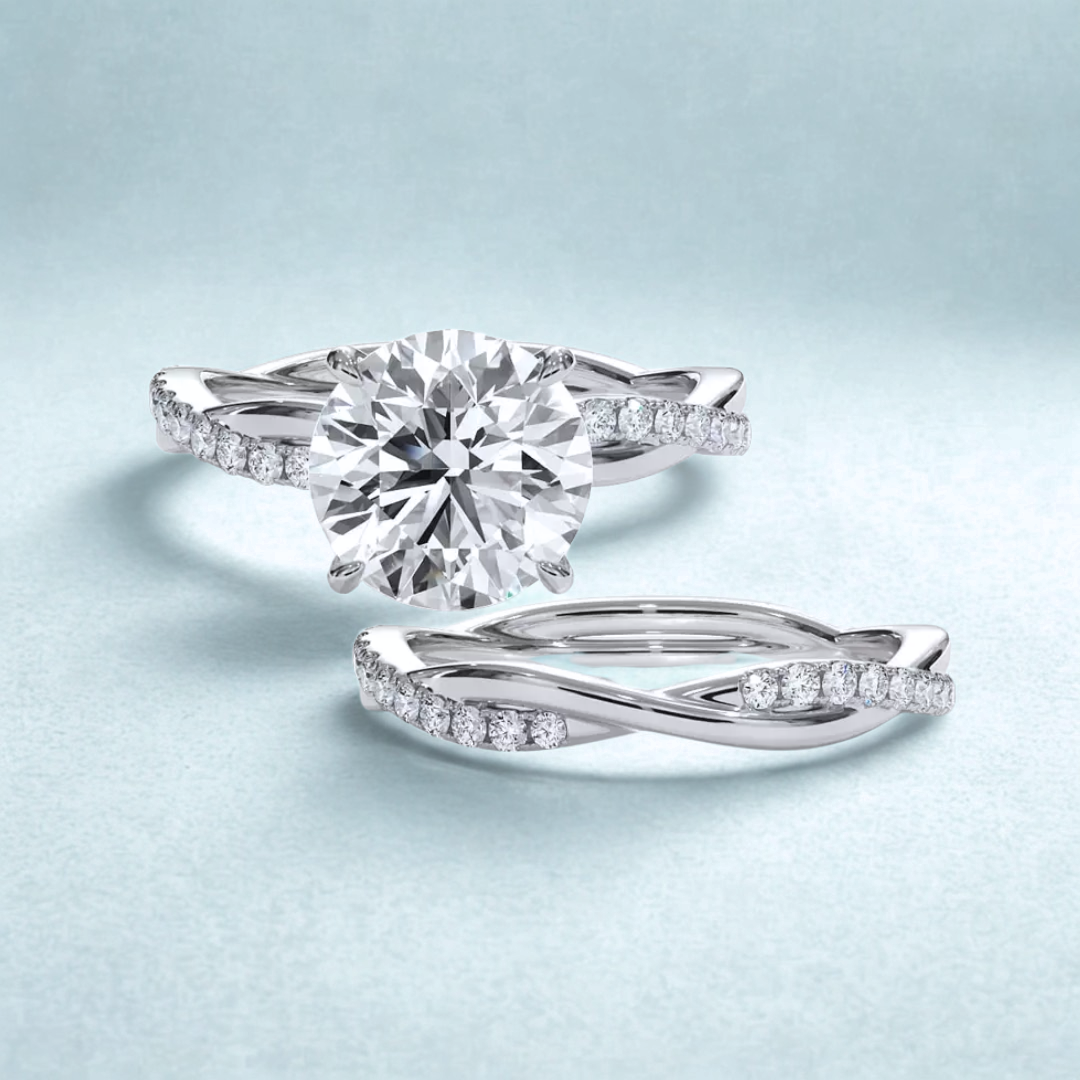
A diamond, whether lab or natural, is a precious crystalline solid made of carbon atoms arranged in a “tetrahedral lattice” structure.
Are lab grown diamonds real diamonds?
Yes, lab grown diamonds are real diamonds. The certificate that comes with your ring, issued by a reputable lab like GIA, IGI, or GCAL, is here to certify this.
The popularity of lab grown diamonds has taken the market by storm in the United States, and as of 2025 lab diamonds are chosen by over half of Rare Carat customers, similar to the national average.
That being said, it is important to note that “diamond simulants” do exist out there: moissanite and cubic zirconia are the most common. They are not actual diamonds; they are less durable and lack the brilliance and sparkle of lab or natural diamonds.
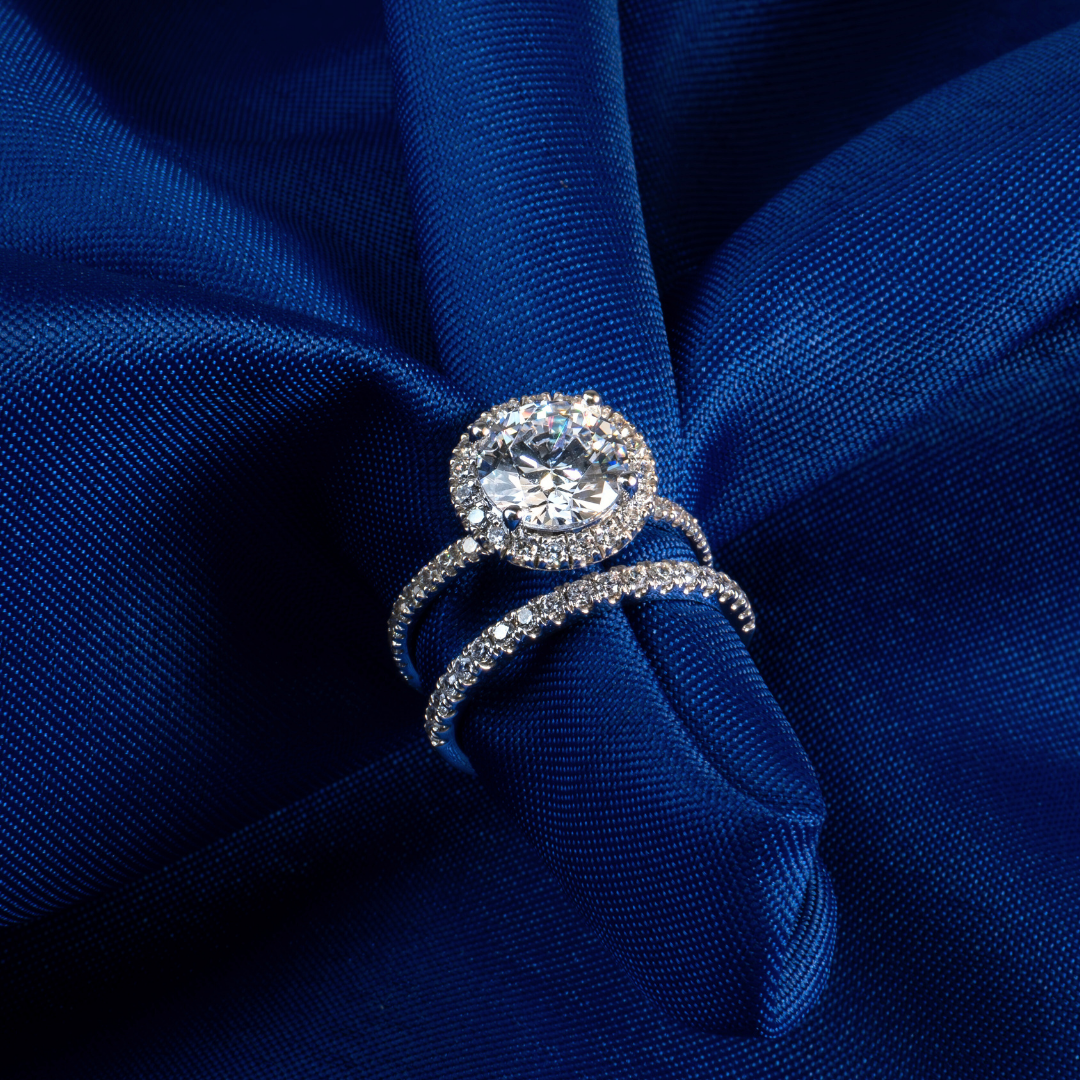
All diamonds sold on Rare Carat are tested and certified to be real, whether lab grown or natural.
Why are lab grown diamonds more cost effective than natural ones?
The costs involved in creating a diamond are lower than mining one, therefore their retail values are quite different.
Lab diamonds are a great way to get a larger, higher-quality diamond without increasing your budget. They are also making fine jewelry more affordable, especially popular pieces like diamond earrings and tennis bracelets, whether as gifts or personal treats.

Two identical diamonds can be priced very differently depending on their origin. Natural diamonds involve traditional mining, whereas lab created diamonds involve energy and highly skilled technicians.
Can you tell the difference between lab and natural diamonds?
You can't tell the difference between natural and lab grown diamonds just by looking - even a handheld tester often won't help and gives false readings.
- As a diamond owner, you can look at its certificate.
- Alternatively you can ask a jeweler to use magnification to read the laser inscription on the diamond girdle and see if it mentions “LABGROWN” or “LG”.
- Specialists with advanced equipment can detect subtle differences by examining growth patterns or invisible traces of chemical markers like metallic inclusions.

The laser inscription on the diamond’s girdle, visible under high magnification, usually mentions if the diamond was lab created.
Are lab grown diamonds perfect?
No. Just like natural diamonds, lab grown diamonds typically have inclusions or color variations. Each one is unique and graded individually based on the 4 Cs - cut, color, clarity, and carat. So whether a diamond is “perfect” depends on the specific quality you choose, not the origin of the diamond.
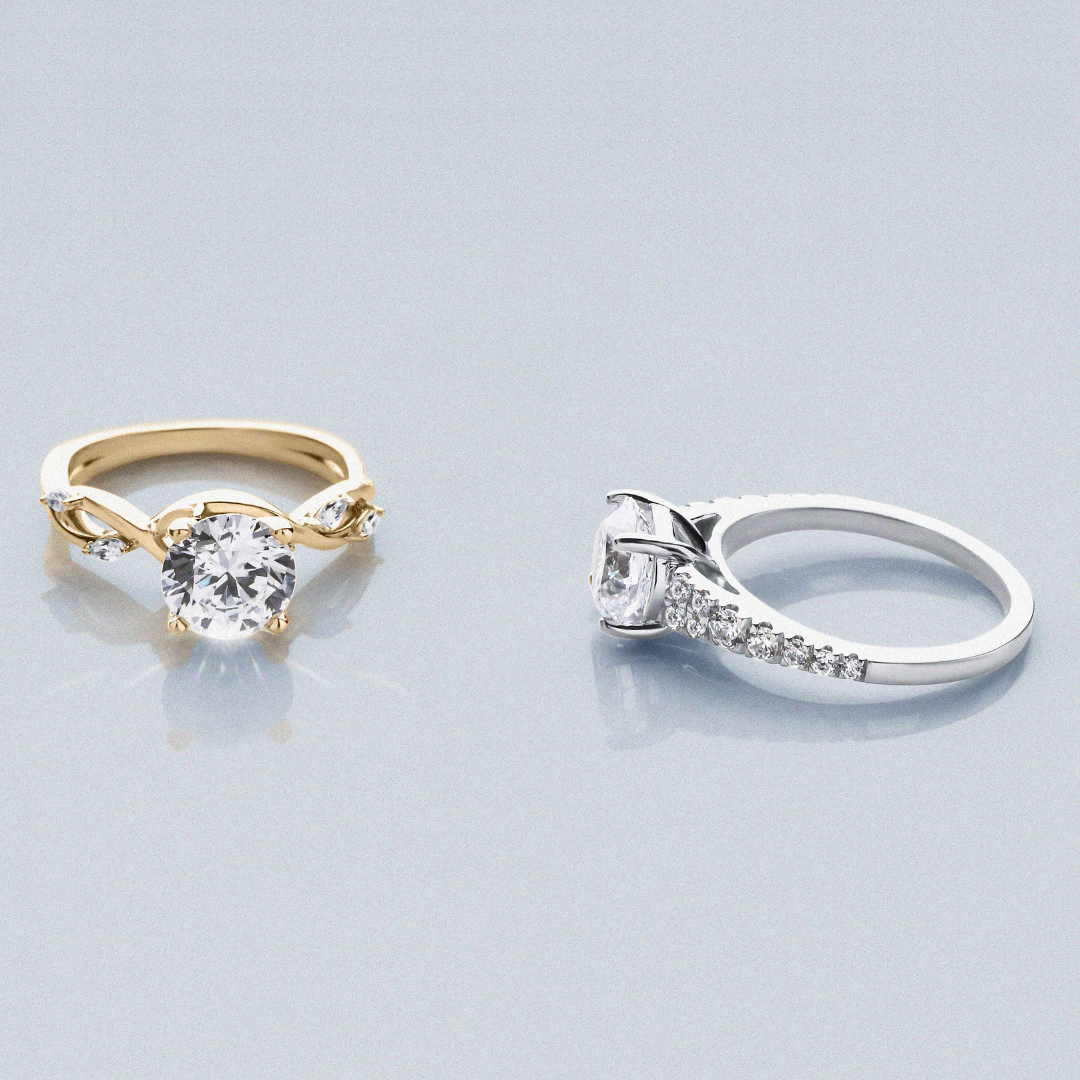
Lab diamonds are graded on the same scale as natural ones, taking into consideration the 4C's. The higher the carat, the color, the clarity, the cut … the rarer and more expensive.
How are lab diamonds made?
There are two ways you can create a diamond in a lab: Chemical Vapor Deposition (CVD) and High-Pressure High Temperature (HPHT). Typically, the method of creation doesn't matter...at the end of the process, you still get a beautiful diamond!
- The HPHT method crystallizes carbon through (wait for it) high pressure and high temperatures. This is similar to the heat and pressure deep within the Earth.
- The CVD method is quickly becoming the preferred way to create diamonds since the machines are smaller and use less energy. A precise mix of gases solidifies onto a carefully controlled diamond seed, slowly growing diamond atom by atom.
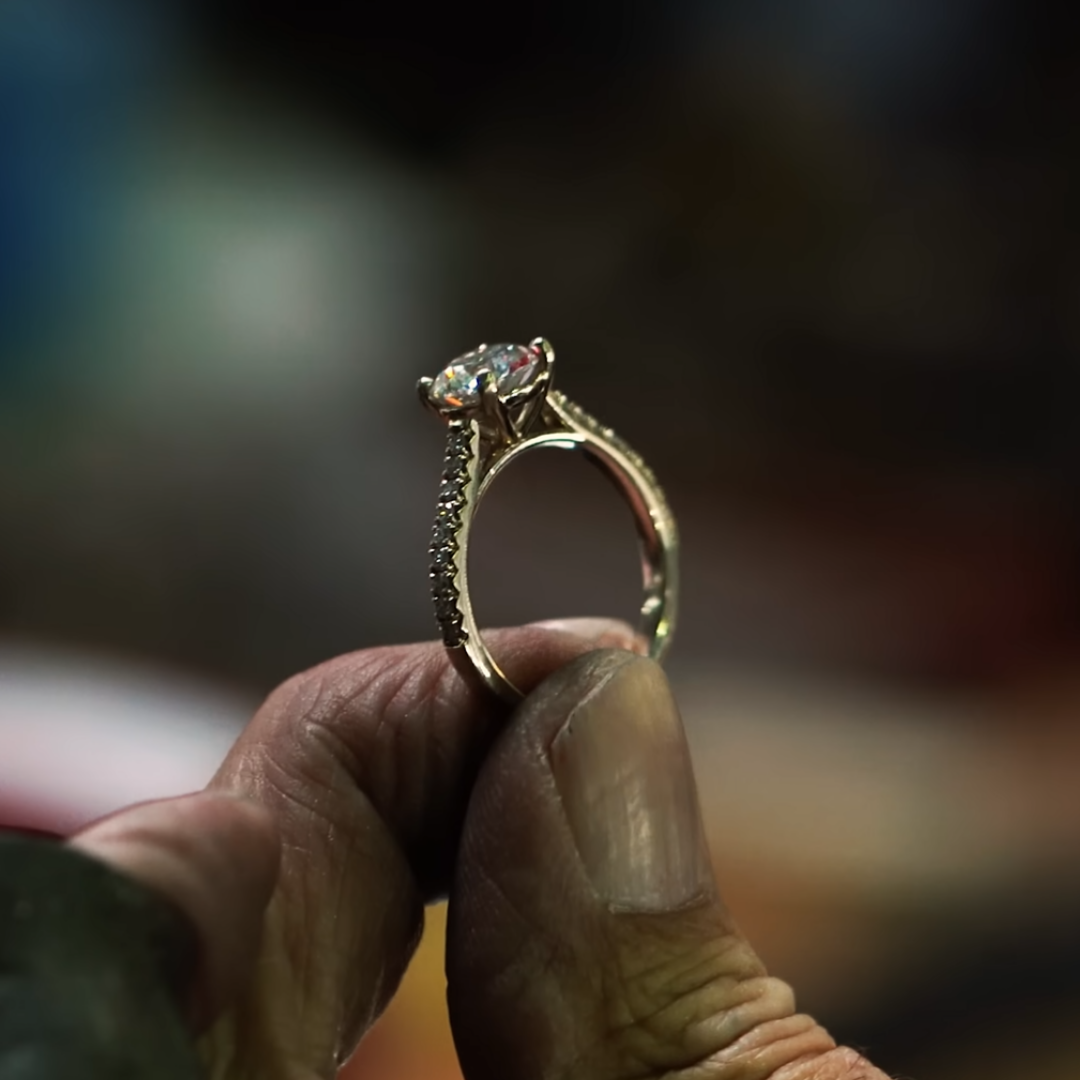
Should I buy my (lab) diamond jewelry on Rare Carat?
Whether you buy lab or natural diamond, for a ring, earrings, bracelet, or pendant, Rare Carat is the best place to shop. Trusted and loved by thousands of customers (Google reviews), we genuinely care about your satisfaction and go the extra mile to protect every purchase.
We offer 30-day free returns with no fine print, 1-year complimentary resizing (One complimentary resizing is included within your first year. Eternity bands are not eligible for resizing after 30 days. Extended coverage is available through our care plan.), and a lifetime warranty. We inspect your diamond's authenticity before it ships. Most importantly, our gemologists will personally guide you to the right choice, and if they give it a thumbs up, you can be confident it will look stunning in person.
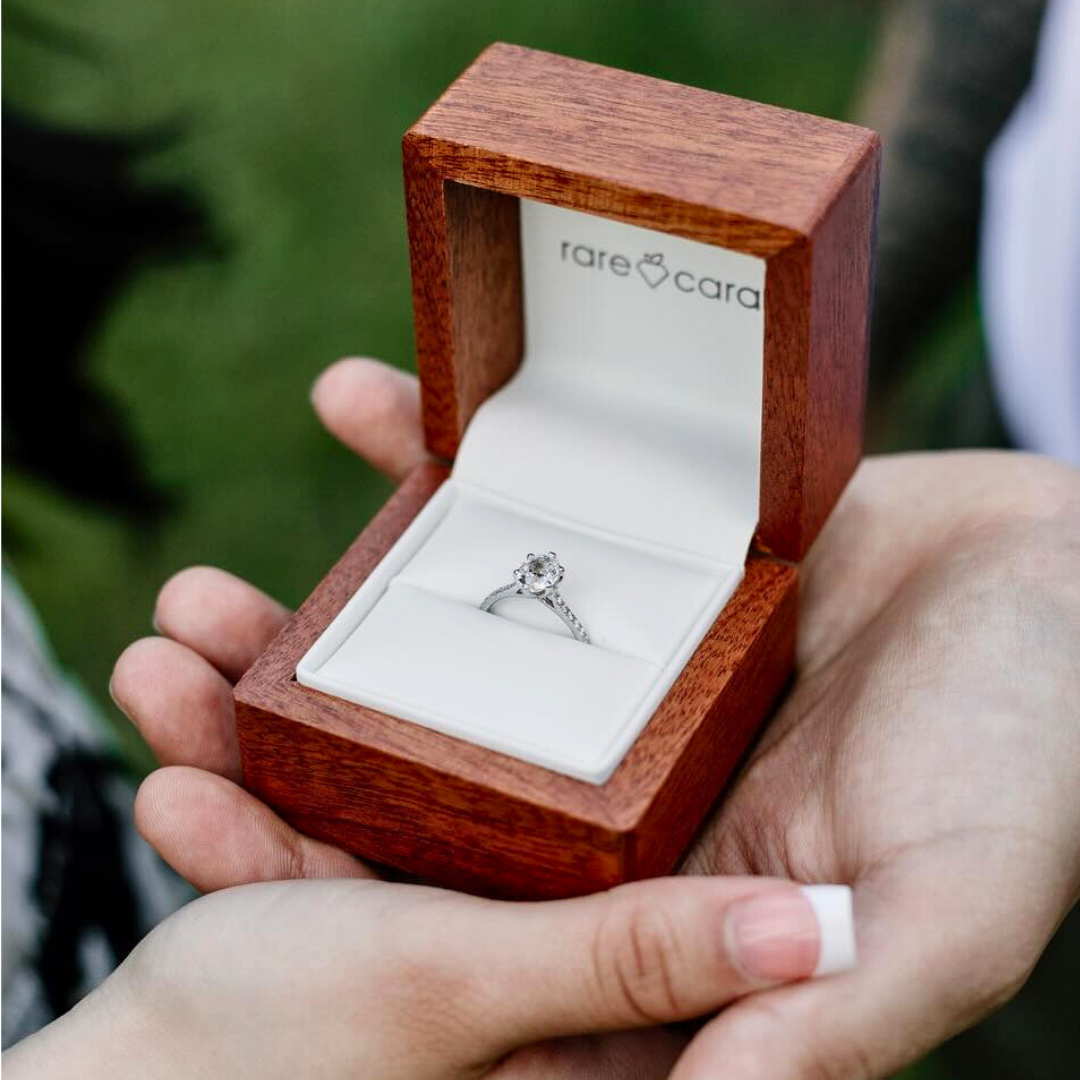
Rare Carat is currently ranked #1 on Trustpilot in the “Jeweler” category.
Can you tell the difference between lab vs natural diamonds?
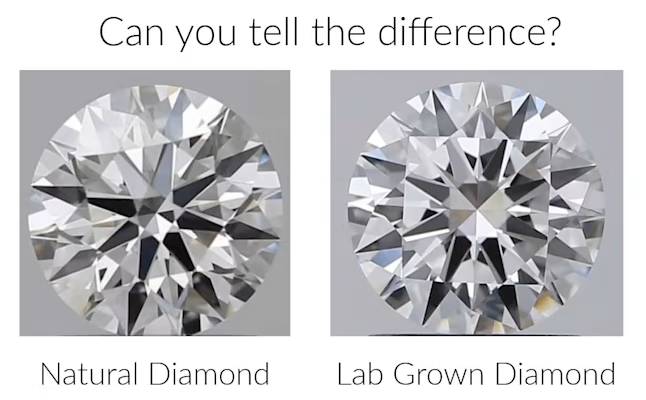 Nope…unless you have expensive and high-tech lab equipment. Lab grown diamonds will look exactly the same to anyone looking at them, even a jeweler. Physically, they are the same. Side by side, you are not going to see any difference with the naked eye - nor will her judgey friend or your soon-to-be mother-in-law. However, if you ever take it to a jeweler or send it in to get certified, equipment will be able to tell the difference.
Nope…unless you have expensive and high-tech lab equipment. Lab grown diamonds will look exactly the same to anyone looking at them, even a jeweler. Physically, they are the same. Side by side, you are not going to see any difference with the naked eye - nor will her judgey friend or your soon-to-be mother-in-law. However, if you ever take it to a jeweler or send it in to get certified, equipment will be able to tell the difference.
Are man made diamonds real diamonds?
Yes. A lab grown diamond is a real diamond that has the same chemical, physical and optical features as a natural just grown in a machine rather than the earth. It will test as a diamond on a handheld diamond tester and by a gemologist because it is a real diamond!
Can a jeweler tell if a diamond is a lab grown?
Only with sophisticated equipment. Or by “cheating” and reading the laser inscription on the girdle of the diamond, which would say LG before the certificate number. Without looking at the inscription, it's very hard to tell the difference with regular testing equipment not found in a laboratory like GIA or IGI. Testing devices are becoming more popular for the industry, but they are still quite costly and don't always work 100%. It also depends on how much training the person has. If you take the stone to a Graduate Gemologist it may be easier for them to tell the difference versus a jewelry store salesperson or even a bench jeweler. We have often seen cheap handheld testers show incorrect results.
Are lab created diamonds eco-friendly? Are they ethical?
Yes, they are ethical. they are also a responsible, eco-friendly choice since no mining is required. While it does take a lot of energy to make them, they are perceived as the more sustainable option because of the environmental implications of mining diamonds (like anything you mine from the Earth).
Natural diamonds have a pretty unfortunate history where blood diamonds were present. Since then, there has been an international effort to get these out of the supply chain (called the Kimberley Process) - some activists argue the process is not effective enough, on the other end, some argue that mining provides livelihoods and export income for these countries… Regardless, all sellers listed on Rare Carat must have conflict-free policies, and we’re working with companies like Everledger so you can see the origin of your natural diamond.
Where should I buy lab created diamonds?
You can search for lab grown diamonds on Rare Carat. But regardless of where you buy, GIA gemologists are available to help you.
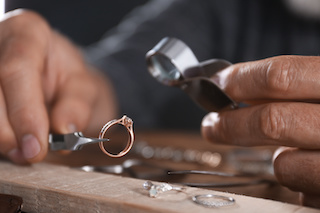
Are man made diamonds worth buying?
Absolutely! Just because they don't hold value on the secondary market doesn't mean they aren't a great option. The old adage, spend 3 months' worth of your salary on a diamond has gone out the window. With a lab grown diamond, you can get a larger, higher-quality stone for less. The best part about it...nobody will ever be able to tell the difference!
Do the 4 C’s apply to lab diamonds? How do I value laboratory diamonds?
Lab-created diamonds are made in a laboratory, not by nature - but it’s still have the same chemical structure. Lab grown diamonds can have inclusions just like natural diamonds. Lab grown diamonds can be flawless, but like natural diamonds, most are not. So you can go ahead and look for the same things (carat, cut, color, clarity).
It is harder for the lab process to make bigger and higher quality diamonds - so like natural, these are rarer.
In terms of the 4 Cs,
The larger the carat,
The higher the color,
The higher the clarity,
And the higher the cut,
… the rarer and more expensive.
Do lab produced diamonds have resale value? Are they a good investment?
Great question. It’s hard to see into the future, but in general, our honest opinion is not as much as natural diamonds.
When you go to sell a natural diamond, you are probably going to see a haircut on the retail value you spent. This is because the diamond wholesaler then has to go back and find a retailer to buy it, the retailer has to stock it and add a margin for their services. Depending on how much you shopped around & whether you ended up buying at a branded jeweler, we’d expect you to get something in the range of 40-75% of what you bought it for. (Branded jewelers will charge a higher margin so you’ll get less back). However, that underlying wholesale value has largely held steady over the years, and that is what is considered when buying a diamondback from a consumer.
On the other hand, valuing lab grown diamonds is tough because wholesale prices have been falling in the last few years as more supply has come into the diamond industry. Our general opinion is that we expect them to fall more over the next few years as more supply becomes available before diamond prices settle down.
Lab-created diamonds should definitely be less expensive than natural diamonds of the same quality in the first place, though.
Do lab grown diamonds hold their value?
Not as well as a natural diamond, no. Diamonds in general are not the best financial investment, natural or lab, but a lab will lose more monetary value faster than a natural stone.
How are lab created diamonds made exactly?
There are two ways you can create a diamond in a lab: Chemical Vapor Deposition (CVD diamonds) and High-Pressure High Temperature (HPHT). Typically the method of creation doesn't matter...at the end of the process, you still get a beautiful diamond!
The HPHT method is the closest to the natural process - it crystallizes carbon through (wait for it) high pressure and high temperatures. This is similar to the heat and pressure deep within the Earth. Fun fact: General Electric was the first to successfully grow diamonds in 1954 using this method (besides Mother Nature who precedes them by just a few billion years). Since this is the more expensive process, it's usually reserved to create lab-grown melee.
Created back in the 1970s, the CVD method is quickly becoming the preferred way to create diamonds since the machines are much smaller, use less energy, and cut down on growing time. The process starts with an HPHT seed crystal that is inserted into a CVD reactor chamber. A concoction of gases, primarily hydrogen (95%-99%) and methane gas (1%-5%), is injected into the chamber and heated by a microwave beam. The gas molecules split and are attracted to the cooler part of the chamber where the seed is carefully temperature controlled. The molecules literally rain down onto the seed, growing diamond in layers. When the final product comes out, it doesn't look much like typical diamond rough - it's in a cube shape and has black carbon surrounding it. Using a laser, the growers will cut off this excess carbon and usually treat the rough using the HPHT process to remove the brownish tint (this is a stable process known as post-growth treatment and will be listed on the grading report).
Get the full story about how HPHT vs CVD processes work.
How is this different from diamond simulants and synthetics?
‘Synthetic diamond’ usually refers to a lab grown diamond. And yes lab-created diamonds are ‘real diamonds’. Lab grown diamonds are chemically the same. Synthetic doesn’t sound as nice so not used as much. A ‘simulant’ usually refers to something like a moissanite or cubic zirconia. These are not chemically diamonds, but are designed to look like real diamonds - but are easily identified by professionals as fakes.
Does GIA certify laboratory produced diamonds?
GIA does certify lab grown diamonds, however, the reports look different than the natural ones (aren't they so pretty?), but that's so people don't get them mixed up. The grading process is exactly the same, and the report still contains all of the same information that you see on a natural diamond report. Lab grown diamond reports are only available electronically (way to go GIA for being more eco-friendly), which means you will not get a physical copy of the report when you order a lab grown diamond that has been graded by GIA. You can access the report via their report check function online.
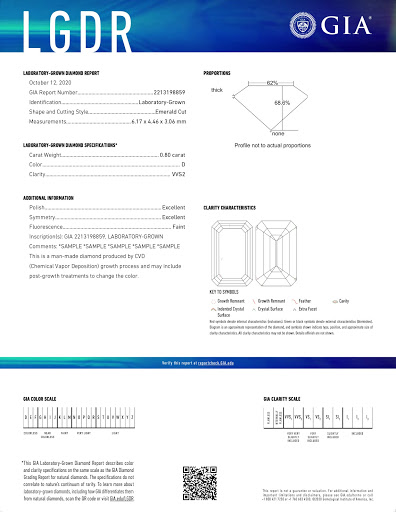
You will still see more IGI reports for lab diamonds though. Why? GIA just revamped their LDG grading reports back in October 2020 so there aren't as many GIA-graded stones on the market yet. Also, IGI took over the lab grown diamond market and became the leader in grading them. We're sure GIA will catch up to them, but it's going to take a little bit of time. Nothing to worry about though, all of our Graduate Gemologists are experienced in working with reports from both labs.

Lab Diamond FAQs